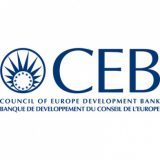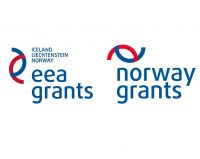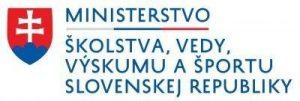Physician, soldier, superman, teacher, police inspector and Messi. These are the answers that Roma children told to writer and a documentarian, Barbara Matejčić, and photographer, Ana Opalić, when they met the children in September 2019 and asked a simple question, “What do you want to be when you grow up?”.
Matejčić and Opalić both award-winning Croatian authors showcased their exhibition, “When I grow up, I would like to be a rich woman”, in Zagreb between September 17-30, 2019 at the VN Gallery. The exhibition shed a light on the homes of Romani children living in settlements, highlighting the relation between housing conditions and pupils’ low educational scores. “I noticed that majority of Roma children have been raised in seven to twelve-member families, where often they all live in one room, as children usually share the bed with their brothers and sisters, they do not have space for studying, not to mention a study desk” shares Barbara Matejčić.


“I started visiting Roma settlements in Croatia approximately 15 years ago. With Ana Opalić we went in Međimurje county to write a feature story on education of young Roma. Then I spent a couple of months in a school in the village of Kuršanec, where I observed fifth graders, as the biggest school dropout is in the fifth grade, and eighth graders as well, with the aim to see what are the challenges Roma pupils face in their transition to high school. In Kuršanec, I heard complaints from the teachers that Roma pupils are not doing their homework, that they do not solve the math equations, do not bring to school their marked report cards, and generally, Roma students do not compete well in school. And, these were teachers and principals who have been working for decades with Roma and reside close to the Roma settlements, but they never visited any home of any of their pupils. If they have seen the homes of these kids, the non-asphalted roads in front of their houses, the muddy pools for which they need tall rubber boots, the absence of a quiet place to study at home, etc., the teachers would understand why the children are not regularly doing their homework. The reality is that some children live without hot water, without heating and sometimes without electricity. Obviously, it is difficult to be a good student under these conditions”, explains Matejčić.
This is how the idea for the exhibition of children’s homes was born by Barbara and her peer-photographer, Ana, as both were willing to artistically reveal where these kids dwell in order to understand why it is hard for them to fulfil the school duties.

Thanks to a communication grant awarded by the Roma Education Fund, Matejčić and Opalić were able to conduct several trips to densely populated Roma settlements in Croatia in order to gather the footage they needed. During the exhibition, deliberately, there is no mention of settlements, places and faces – the artists chose to oppose the stereotypical image of Roma kids proliferated in media – by showing a complete absence of people in the photos. Instead, the artists portrayed the dwellings, accompanied with audio recordings of children talking. The artists asked primary school students a very simple question, “What do you want to be when you grow up?”. And, to the authors’ surprise or not, these kids, aged 6 to 14, appeared to have the same wishes as all other kids.
“We titled our exhibition “When I grow up, I want to be a rich woman”, because for Roma children to be ‘rich’ means a completely different thing. It means to have food, to have clothes, to have one’s own room”, adds Matejčić.
Some of the Roma children said how difficult it is to reach school in the winter time – there is a school bus for elementary school pupils but there is none for high school students. For the latter, though, there is a dorm bed provided by the State, and indeed, staying in a dorm proved to be a motivator for the upper graders due to the vicinity of the educational facility, the availability of peers, library, hot water and electricity, food, and, not the least, the monthly scholarships, provided to high school Roma students by the Croatian government.
REF asked the owner of the VN Gallery, Olga Majcen, about her impressions from the exhibition. “The photos are discreet, they concentrate on the interior and the environment of the kids’ houses and they narrate the lives of Roma people without showing their faces. Though they are not “personal” in this sense, they are still colorful and tell a story.”

Photographer, Ana Opalić, has experience in shooting war victims and depicting their trauma. Shooting a Roma house, however, was a moment of a different vulnerability, as Ana described further, “given that people are doing their best to [survive and make it] but it is sad to see inequality. Roma people kept on hoping that something will change for the better with our photos which we, as authors, cannot promise. I cannot change the world with one exhibition, but I can pop up some questions and make the audience realize that half an hour away from Zagreb there are people living in barracks, without a toilet and a kitchen. It is impossible for many of them to do something with their lives, actually”, sighs the photographer.
Attendees of the exhibition opening were also Croatian non-Roma children of the same age as the interviewed Roma children. With the headphones on their ears, the non-Roma peers sympathized to the sounds they heard. Here are some excerpts from the children’s voices.

When I grow up…
“I want to be a police inspector, I will have a pistol, and I will say „Hands up!”. They will call me when a robbery happens.” (7 years, boy)
“I want to be a singer. My favorite song is „This house is not for sale” and as well I want to be a rich woman and I don’t know what else.” (9 years, girl)
“I want to be a hairdresser and have my own parlor where I work only long hairs. Also, I would like to employ someone to work for me. When a woman is going to a wedding, I can do her hair.” (10 years, girl)
“I want to work as a mechanic after I graduate from secondary school. I would like to live with my parents to be able to help them, to cut woods in winter, etc.” (14, boy)
“I graduated the 7th grade. When I was six years old, I started to work: to carry woods, to clean fish. If I didn’t work, I wouldn’t have had what to eat”. (female parent)
“Everyone in my class hates Math, I also hate Math but we need to study it in order to be able to count money. Otherwise, I would like to become a queen, to have my own house and to live alone in it. I wish learning how to make cakes, having what to eat, driving a car, a BMW, and mother watching me how I win when we play „nogomet” (football) and our team playing against Barcelona and winning.” (9, girl)
“I want to work in a bakery. I will sell [the products] cheaper. I would like to graduate from such [vocational] school and to have a craft in my hands. I would buy flour, sugar, eggs and make nice and fresh [products] for everyone who wants to buy.” (13, girl)
“I want to be a teacher, because I love to help children and to teach them how to read and write.” (11, girl)
“I would become a make-up artist. I will put on you black-coloured finger nail polish, foundation and silver makeup.” (11, girl)
“A physician, because we are 8 children [at home] and one of us is sick. I want to help my brother, since he is not able to walk…
Also, I would like to be a cook- when my mother goes to work, I could prepare the meals, to cook beans, to bake potatoes and meat, to make a stew…. and nothing else.” (12, girl)
Listen to the original interviews with the children here (in Croatian):

















